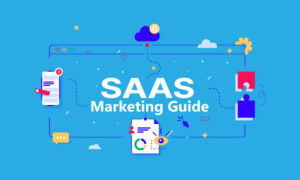In today’s digital age, a website is the cornerstone of a comprehensive digital marketing strategy. Your website is not just a digital billboard; it is an interactive platform that engages customers, provides valuable information, and facilitates transactions. Its role in marketing ROI – the return on your marketing investment – is crucial. Understanding the relationship between your website and marketing ROI enables you to make informed decisions that drive business growth and profitability.
A website’s contribution to marketing ROI extends beyond mere aesthetics. It is the hub where advertising efforts converge and analytics tools track customer interactions. The right utilization of a website as a marketing tool influences crucial marketing outcomes such as customer acquisition, retention, and, ultimately, the effectiveness of your marketing dollars. Measuring and improving your website’s effectiveness ensures that your investment in marketing channels yields the highest return.
Key Takeaways
- Your website is a dynamic tool for maximizing marketing ROI.
- The effectiveness of your website directly impacts customer acquisition and retention.
- Analyzing website data guides strategic marketing investments.
Understanding Marketing ROI
Your marketing ROI (Return on Investment) signifies the profitability of your marketing efforts. By understanding and optimizing your marketing ROI, you can ensure that your website is attracting visitors and contributing to your business’s financial success.
Defining ROI and Marketing ROI
ROI is a financial metric, typically expressed as a percentage, that measures the profitability of an investment. In a broad sense, it’s the net profit ratio to the investment cost. The Marketing ROI is the calculation of the return generated on money spent on marketing activities. The Marketing ROI formula can be simplified as:
(Marketing Gains – Marketing Costs) / Marketing Costs = Marketing ROI
By applying this formula, you track the effectiveness of your marketing campaigns in terms of monetary return.
Importance of Measuring Marketing ROI
Measuring your marketing ROI is critical for making informed business decisions. It allows you to:
- Evaluate effectiveness: Assess which marketing initiatives work best.
- Allocate resources wisely: Direct your marketing budget toward the most profitable activities.
- Forecast results: Predict future marketing success based on historical data.
Understanding the ROI from your website helps you justify marketing spend and gauge the site’s overall contribution to your business.
Challenges in Calculating Marketing ROI
Calculating your marketing ROI can be complex due to:
- Attribution: Assigning sales to a specific marketing initiative is challenging, especially with multiple touchpoints involved.
- Time frame: The effect of marketing actions may not be immediate, complicating the exact ROI assessment.
Despite these challenges, with the right data and analytical approach, you can derive a realistic view of your marketing ROI and ultimately drive your website’s role in achieving robust financial performance.
Website as a Marketing Tool
Your website is a central hub for your marketing efforts, directly influencing ROI by attracting traffic, engaging visitors, and converting leads. A well-crafted web design and content strategy can significantly enhance your marketing performance.
Impact of Website Design
Your website’s design is crucial in making a strong first impression. Aesthetic, usability, and navigation are the cornerstones of effective site design, which directly relate to user experience. Your website should be visually appealing and easy to navigate to retain traffic and encourage exploration, supporting SEO efforts by reducing bounce rates and increasing the likelihood of visitors returning.
Content Strategy and Value Proposition
A robust content strategy positions your website as a valuable resource for your audience. Your content should align with your user’s needs and your brand’s value proposition, ensuring relevance and driving engagement. Regular updates with blogs, articles, and resources improve your site’s SEO, increasing visibility on search engines and driving more organic traffic.
Conversion Optimization
Your website should be optimized to convert visitors into leads and customers. This means strategically placing call-to-action (CTA) buttons, simplifying forms, and designing an intuitive user interface. Every landing page should be purposeful, guiding users to take the next step, whether subscribing to a newsletter, requesting more information, or purchasing.
Blogs and Educational Content
Blogs are powerful for driving traffic and establishing authority in your niche. You establish trust with your audience by providing educational content that solves problems or imparts valuable knowledge. This trust, built over time, cultivates a loyal following and improves conversion rates. Regular blog updates focused on relevant topics and SEO best practices ensure your website remains a go-to source for your users.
Tracking and Analytics
In digital marketing, the ability to track your performance and analyze data is crucial for evaluating the effectiveness of your strategies and investments. With the right tracking and analytics, you can identify which actions lead to the best outcomes and adjust your approach for better marketing ROI.
Key Performance Indicators (KPIs)
Your ability to measure the effectiveness of your marketing efforts hinges on identifying and tracking the right KPIs. Core KPIs related to website performance include:
- Conversion Rate: The percentage of visitors who take a desired action.
- Click-Through Rates (CTR): The ratio of users who click on a specific link to the number of total users who view a page, email, or advertisement.
- Number of Leads: A count of potential customers who express interest in your product or service.
- Impressions: The number of times an ad is displayed, regardless of whether it is clicked.
Using Tools like Google Analytics
Google Analytics is a powerful tool that offers detailed insights into your website’s traffic and marketing effectiveness. Here’s how to leverage it:
- Set up your account and tracking code to monitor interactions on your site.
- Utilize the dashboard for real-time data on user behavior and acquisition channels.
- Analyze reports to understand which marketing campaigns drive the most traffic and conversions.
Understanding Traffic and User Behavior
Analysis of user behavior on your website can reveal key insights into your audience and their journey. Focus on metrics such as:
- Bounce Rate: The percentage of visitors who navigate away from the site after viewing only one page, indicating engagement level.
- Traffic: Monitor the sources of your website traffic, whether it be direct, referral, organic, or paid, to understand which channels are most effective.
- The path users take through your site provides an understanding of which content captures attention and potentially leads to conversion.
Advertising and Traffic Acquisition
Your website’s success in marketing ROI largely hinges on how effectively you channel advertising and maximize traffic acquisition. These facets are critical for driving relevant visitors to your site, where you can convert them into customers or leads.
Paid Advertising Channels
You can leverage various paid advertising channels to direct traffic to your website. Google Ads is a prevalent platform allowing you to bid on keywords and place ads in Google’s search results or partnered websites. Other channels include social media advertising through Facebook, Instagram, or LinkedIn. Each channel offers different formats and targeting options, which can be tailored to meet your campaign goals.
Organic vs. Paid Traffic
Organic traffic is visitors who find your website through unpaid search results or direct navigation and referral links. In contrast, paid traffic refers to visitors who visit your site due to PPC (pay-per-click) advertising campaigns. While organic traffic is a cost-efficient way to build your audience over time, paid traffic can provide immediate results and is easier to scale.
Ad Spend and Its Impact on ROI
Your ad spend is the total amount you invest in your advertising campaigns. Monitoring your ad spend is essential to understanding your marketing ROI. To calculate the latter, subtract the cost of your advertising from the revenue generated and then divide it by the ad spend. A positive ROI indicates that your advertising efforts generate more revenue than the cost of the ads, while a negative ROI means you are spending more on ads than the revenue they bring in. Use this formula to keep track of your marketing performance:
- ROI Marketing Formula: [ (Revenue from Ads – Ad Spend) / Ad Spend ] x 100
Remember to consider both direct and indirect revenue impacts, as some advertising campaigns may contribute to long-term brand growth, which isn’t immediately quantifiable in profit terms.
Customer Acquisition and Retention
Your marketing ROI heavily depends on balancing customer acquisition with retention strategies, which fuel long-term business growth. Directing your efforts toward attracting new customers while ensuring your existing base remains engaged is crucial.
Lead Generation Strategies
To increase your lead-to-customer rate, it’s essential to deploy effective lead-generation strategies. Utilize targeted advertising, content marketing, and promotional campaigns to attract potential leads. For a successful conversion, ensure every touchpoint is optimized for the user experience, from landing pages to call-to-action buttons. Keep track of your conversion rates to gauge the effectiveness of these strategies.
- Advertising: Target your ads to reach potential leads.
- Content Marketing: Offer valuable content that addresses your leads’ pain points.
- Promotional Campaigns: Create offers that entice and engage leads.
Customer Lifetime Value (CLV)
Your Customer Lifetime Value (CLV) measures the total revenue you can expect from a single customer account. It helps predict the long-term value of your customer relationships and can guide your decisions on acquisition spending. To calculate CLV, multiply the average purchase value by the purchase frequency over the customer’s lifespan.
CLV = Average Purchase Value x Purchase Frequency x Lifespan
Maximizing CLV involves not only increasing the frequency and value of purchases but also extending the length of customer relationships.
Customer Retention and Loyalty
Creating lasting customer relationships is equally important as attracting new leads. You’ll want to keep your customer retention rates high, as it’s more cost-effective than acquisition. Employ personalized communication, loyalty programs, and exceptional customer service to boost retention. Monitor metrics such as repeat purchase rates and engagement levels to assess loyalty.
- Personalized Communication: Send targeted emails and offers.
- Loyalty Programs: Reward long-term customers.
- Exceptional Customer Service: Provide support and resolve issues quickly.
By maintaining high customer service standards and showing appreciation for loyal customers, you enhance customer value and positively impact your marketing ROI.
Strategic Marketing Decisions
Your website is a potent tool for evaluating marketing ROI and making strategic marketing decisions is essential to optimizing this metric. Each decision can significantly impact your ROI, influencing cost efficiency and revenue growth.
Selecting Marketing Strategies
When you select marketing strategies, consider a diverse mix that leverages your website’s full potential. You must evaluate each strategy for its ability to meet your financial goals and align with your brand values. For example:
- SEO: Improving search engine rankings to drive organic traffic.
- Content Marketing: Engaging and retaining your audience through valuable content.
- PPC: Acquiring immediate traffic through paid advertisements.
Target Audience Analysis
Understanding your target audience is crucial for website ROI. When analyzing your audience, pay attention to:
- Demographics: Age, location, gender, income level, etc.
- Behavior: Website navigation patterns, content preferences, and conversion triggers.
Use this data to inform which segments deliver the highest ROI, allowing for a more effective marketing budget allocation.
Marketing Strategy Development
Finally, developing your marketing strategy should be grounded in data and a deep understanding of your target audience. Your strategy must encompass:
- Goals: Specific, measurable, attainable, relevant, and time-bound objectives.
- Tactics: The specific actions you’ll take to achieve those goals, whether it’s through influencer partnerships, email marketing campaigns, or social media engagement.
Each tactic chosen should be justified by its anticipated impact on your marketing ROI, ensuring that your website serves as a dynamic tool in achieving overarching business objectives.
Frequently Asked Questions
When delving into marketing ROI, particularly for websites, it’s important to understand how it’s measured, the impact of optimization, and what strategies are effective. These FAQs provide insight into the often-complex world of online marketing returns.
How can ROI be calculated for digital marketing efforts?
To calculate ROI for digital marketing, subtract the cost of your marketing efforts from the revenue generated, then divide this by the cost of your marketing efforts. Multiply that number by 100 to express it as a percentage.
In what ways does website optimization impact marketing ROI?
Optimization enhances user experience and search engine rankings, increasing traffic and conversions. These improvements directly influence marketing ROI by attracting more qualified leads and increasing sales.
How do marketing agencies measure ROI for their online marketing strategies?
Agencies like Ad Stars, typically track metrics like traffic, conversion rates, and customer acquisition costs. They then relate these figures to sales data to evaluate the profitability of different online marketing strategies.
Why is understanding the ROI of a website visit important for businesses?
Understanding the ROI of a website visit helps businesses assess the effectiveness of their web presence in attracting prospects and contributing to the overall sales cycle, allowing for informed strategic adjustments.
What strategies do marketing agencies use to sell ROI-focused marketing services to small businesses?
Agencies use case studies, customer testimonials, and performance metrics to demonstrate past successes. They often present marketing plans tailored to increase small businesses’ leads, sales, and overall profitability.



































